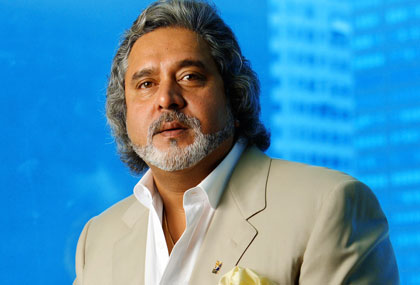Vijay Mallya must be currently one of the most hated and most discussed people in the country. He has defaulted on bank loans of around Rs 9,000 crore and left the country. At least, that is the way most people who know who he is, look at him. He has come to be associated with everything bad that is currently happening to the banks in India.
Nevertheless, he has become a victim of what is called the availability bias. Leonard Mlodinow explains this in his book The Drunkard’s Walk—How Randomness Rules Our Lives through an example.
As he writes: “Which is greater: the number of six-letter English words having n as their fifth letter or the number of six-letter English words ending in ing? Most people choose the group of words ending in ing.”
Why is that? As Mlodinow explains: “Because words ending in ing are easier to think of than generic letter words having n as their fifth letter. But you don’t have to survey the Oxford English Dictionary—or even know how to count—to prove that guess wrong: the group of six-letter words having n as their fifth letter words includes all six-letter word ending in ing.”
This type of mental mistake is referred to as the availability bias. As Mldowinow writes: “In reconstructing the past, we give unwarranted importance to memories that are most vivid and hence most available for retrieval.”
Mallya has become the victim of this availability bias. Whenever the topic of corporates and businessmen who have taken loans from banks and not paid them comes up, Mallya’s name comes first. Nobody talks about other businessmen who haven’t paid their loans as well.
Why is that the case? Other than being a businessman, Mallya is also a sports enthusiast and a page 3 regular, who gets regularly covered in the media. Over and above his businesses, from airlines to liquor to real estate, Mallya has also owned an IPL cricket team and a Formula One racing team. Hence, he gets regularly covered in the media and has top of the mind recall among people.
And given that he has a top of the mind recall, the media has covered his loan shenanigans more extensively than other businessmen. Hence, he has become associated with the corporates defaulting on banks loans, more than anyone else.
As Daniel Kahneman writes in Thinking, Fast and Slow: “People tend to assess the relative importance of issues by the ease with which they are retrieved from memory—and this is largely determined by the extent of coverage in the media. Frequently mentioned topics populate the mind even as others slip away from awareness. In turn, what the media chooses to report corresponds to their view of what is currently in public’s mind.”
It’s a little bit of a chicken and egg story here. Because Mallya has top of the mind recall, the media writes about him. And because the media writes about him he has top of the mind recall among people.
Vijay Mallya owes banks around Rs 9,000 crore. As on December 15, 2015, the total gross non-performing assets (or bad loans) of banks of the loans they have given to corporates, stood at around Rs 2.59 lakh crore. Mallya’s contribution to the total corporate bad loans is only around 3.5%. Hence, there are bigger defaulters out there, who the banking system and the government need to deal with, and the media need to write about. But that doesn’t seem to be happening.
This is not to suggest that Mallya is god’s gift to mankind and is being needlessly victimised. At the same time, he is nowhere the villain he is being made out to be. As Mlodinow writes: “By distorting our view of the past, the availability bias complicates any attempt to make sense of it.”
Mallya’s king of good times image, in the minds of people, is now working against him. This is not helping the former King of good times in his bad times.
The column originally appeared in Bangalore Mirror on March 23, 2016

